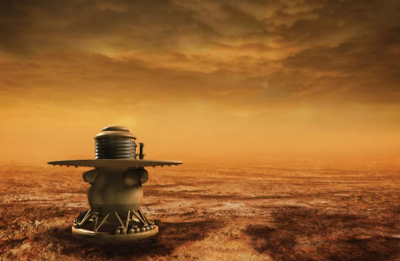SPACE — The surface of Venus is a terrible place. However, that won’t stop NASA landers from trying to explore it.
A new NASA video claims that Venus is Earth’s twin, but very evil. An evil moniker exposed in some way, makes Venus the perfect place to investigate.
Scientists and engineers from NASA and the European Space Agency (ESA) are preparing to send three new missions to the second rock from the sun. They wanted to know more about the nearest planet, which is similar to Earth in many ways but very different in how it treats life.
Scroll to read
Scroll to read
The video touches on some of the grisly, but also fascinating, aspects of Venus. First, there is the runaway greenhouse effect. The atmospheric envelope is 24 kilometers thick made of carbon dioxide and contains clouds of sulfuric acid. All of that is poison to life. Not only that, the planet produces temperatures hot enough to melt lead.
NASA director of planetary science, Lori Glaze said, in the video, the surface of Venus can reach 900 degrees Fahrenheit or 480 degrees Celsius. “So it’s a crazy place, but very interesting,” said Glaze.
“And we really wanted to understand why Venus and Earth turned out to be so different.”
To address the issue of lander or battery resources, NASA has partnered with Advanced Thermal Batteries (ATB) Inc to develop a new high temperature resistant battery. Currently, ATB researchers have developed a promising and very powerful prototype battery.
The new battery will use the extreme temperatures of Venus, which the lander will use, in the form of low-discharge molten salt. This material has a relatively high power density and is easy to store and maintain on Earth. This is because the high melting point of salt means that it will remain solid and inert, while retaining its energy potential for many years.
The main problem with existing molten salt batteries is their high discharge rate. This is due to an internal electrochemical reaction that limits the use of normal thermal batteries with molten salt electrolytes to only a few hours on Venus.
According to NASA, ATB has just developed a prototype 17-cell battery capable of limiting internal reactions. Doing so will reduce the drain on battery power thereby extending its life significantly.
This allows the ATB battery to discharge between 19 volts and 25 volts for 118 days. “The recent demonstration of battery technology, with its improved architecture and low self-discharge electrochemistry, is a major achievement that many might not think of,” said ATB project engineer Kevin Wepasnick.
NASA still needs time to make sure the new battery will be suitable for the harsh environment of Venus. This includes developing housing and battery packs that can withstand the extreme pressures and caustic properties of Venus’ atmosphere. However, the biggest hurdle the Long Lived In-situ Solar System Explorer (LLISSE) had to overcome appears to have been overcome. Source: Space.com
“).attr(
type: ‘text/javascript’,
src: ‘https://platform.twitter.com/widgets.js’
).prependTo(“head”);
if ($(“.instagram-media”).length > 0)
$(”


